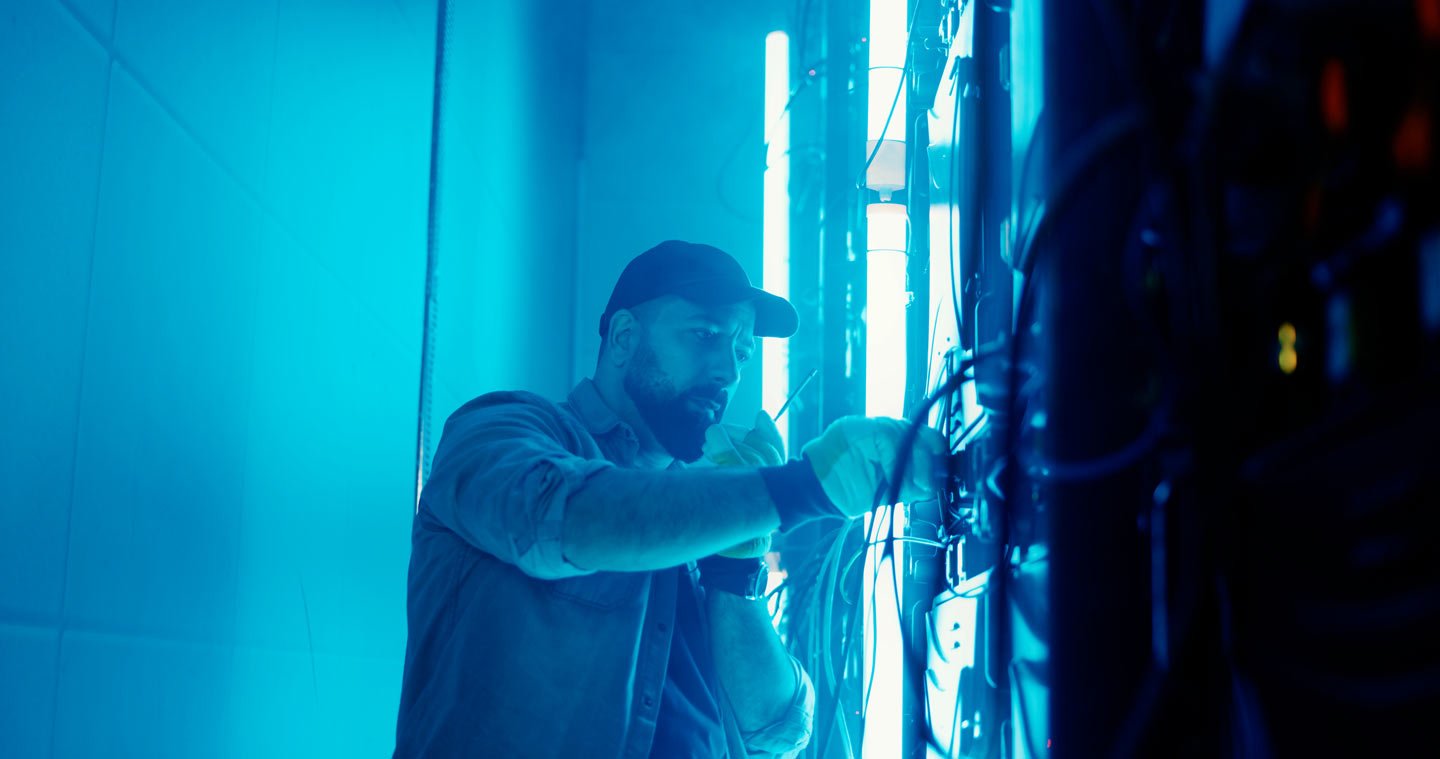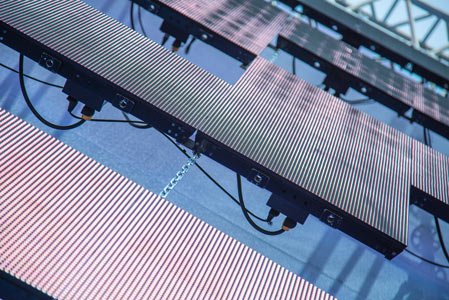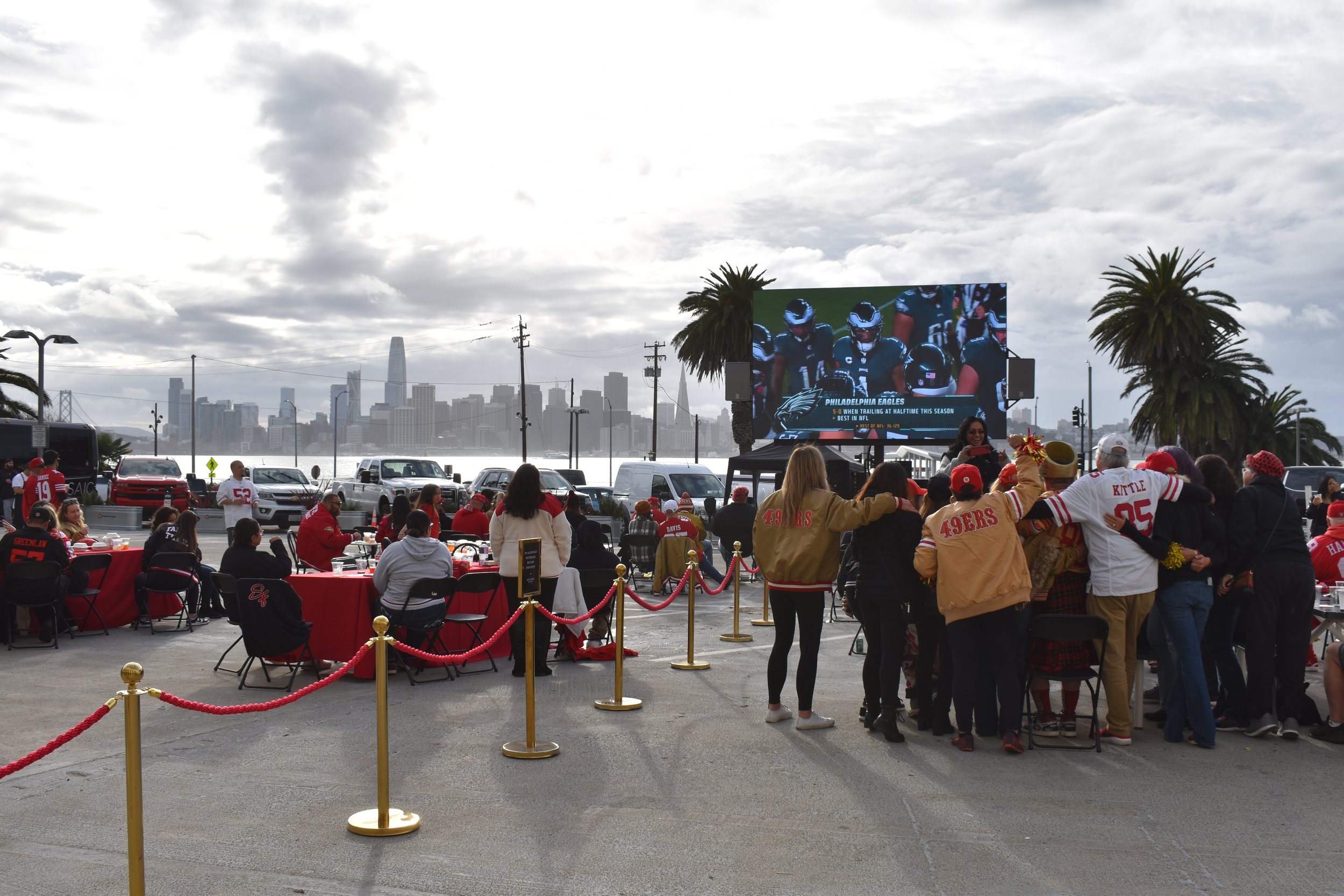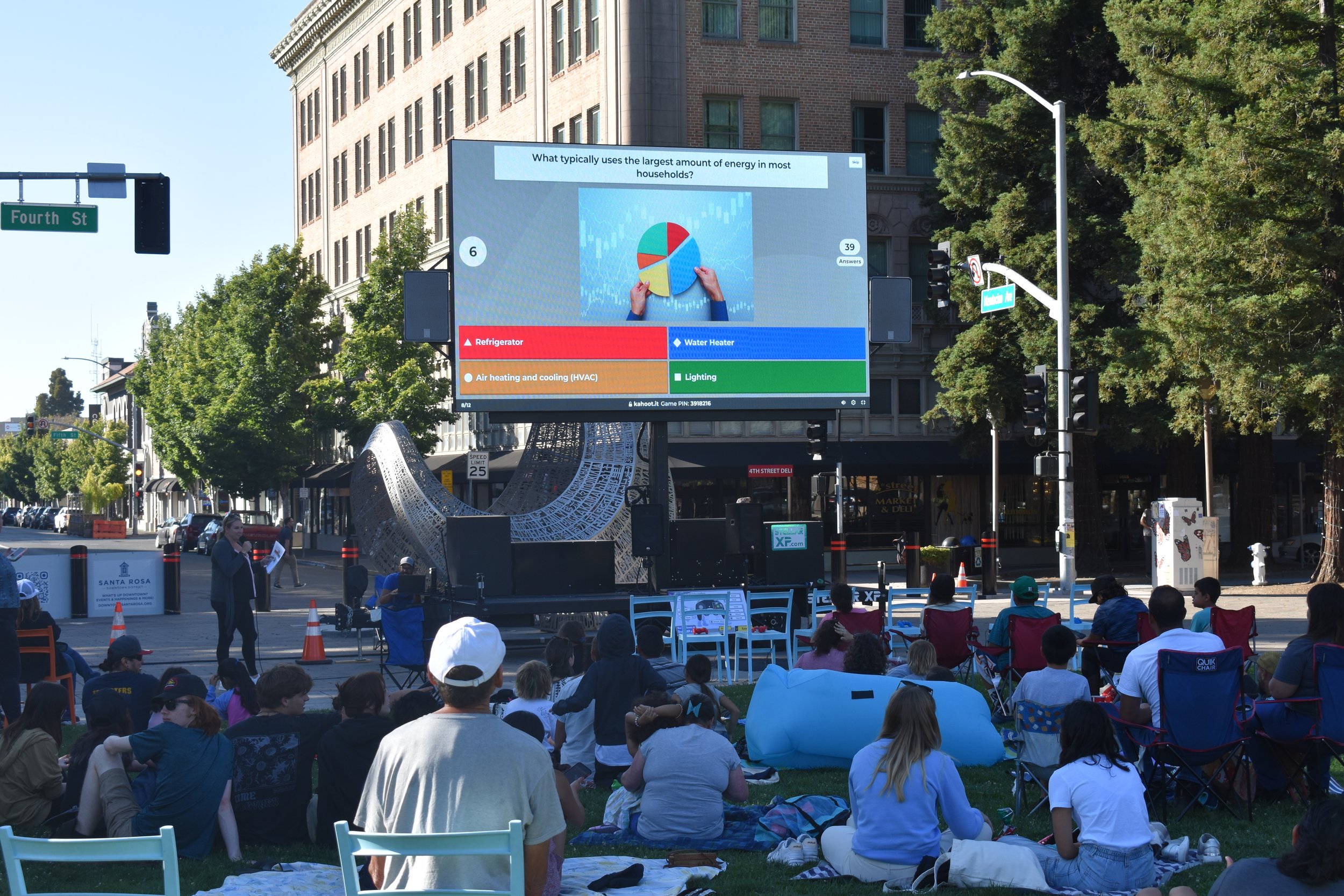Safety & Maintenance Tips For Your LED Screen Rental
Central to every unforgettable event, from the biggest concerts and conferences to the most intimate outdoor gatherings, is something that captures everyone’s attention — the LED screen.
This exciting technology does more than just display images. They bring events to life with vibrant colors and dynamic visuals that pull audiences into the experience. But as much as we rely on these screens to dazzle and inform, their smooth operation depends heavily on something a little less glamorous but equally important: a commitment to safety and maintenance.
As we look into the world of LED screen rentals, it comes with a set of responsibilities that can't be ignored. Behind every stunning display is a complex piece of technology that needs to be treated with care. Ensuring the safety of everyone around and the continuous, flawless performance of the screen means getting down to the framework of what makes these screens tick.
With that, here is your go-to guide for keeping things running safely and smoothly with your upcoming event. We’ll cover the essential safety guidelines and maintenance tips for your LED screen so you can avoid any hiccups during your event. From tackling common technical glitches to conducting thorough pre-event checks, we’re here to help you navigate through the process with ease. Because when it comes down to it, the success of your event and the safety of your guests are what matter most.
Let’s make sure your event shines bright—safely and splendidly.
Getting To Know Your LED Screen
Let's start with a little get-to-know-you session with the star of your event: the LED screen. Made up of countless tiny light-emitting diodes (LEDs), they work together to bring you those jaw-dropping visuals that leave your audience in awe. But here's the thing—behind those dazzling displays is some pretty sophisticated technology that needs a bit of TLC to keep it running smoothly.
Mobile LED Screens vs. Video Walls
Now, before we get into how to keep things safe and sound, it's important to distinguish between the two main types of LED screens you might be dealing with: mobile LED screens and video walls.
Mobile LED screens are all about adventure, ready to be packed up, moved, and set up wherever you want. These screens are usually encased in rugged frames and mounted on trailers or vehicles, making them perfect for anything from an impromptu movie night under the stars to the main stage at a music festival to a wedding reception that dazzles.
LED video walls, on the other hand, are the loyal companions that stay put, often more permanent than mobile LED screens. You’ll see them in commercial spaces or major venues which require something for a longer duration of weeks, months or even years. They're in it for the long haul, which means their setup is a bit more expensive and involved, and they require a dedicated audio-visual (AV) plan for installation, ongoing care and maintenance.
No matter which type you're working with, the key to a successful relationship with your LED screen lies in understanding its unique personality—that is, getting familiar with the specific model you've rented. What environment does it thrive in? How does it handle the heat? What are the ideal settings for it to deliver your content in the best way?
Getting up close and personal with your LED screen's requirements is not just about ensuring you put on a visually stunning show. It's also about making sure that everything runs without a hitch, safely and efficiently, from the moment the screen lights up to the final curtain call.
Pre-Event Safety Checks
Before event day comes, there's a critical step that needs your undivided attention: safety checks. Think of this phase as the pre-flight checklist for a pilot—essential for ensuring a smooth and safe journey ahead. Let's walk through the essentials to make sure your event takes off without issue.
Inspection Of The Screen & Associated Equipment
Start with a thorough inspection of the LED screen and all the bits that come with it—cables, mounts, and any other associated equipment. Look for any signs of wear and tear, such as frayed cables or loose connections. These might seem like small issues, but they can lead to bigger problems if not addressed.
Ensuring Structural Stability
Whether your event is indoors under the grand chandeliers of a ballroom or outdoors in the elements, ensuring the structural stability of your LED screen setup is paramount. For indoor events, make sure your screen is securely mounted and that any supporting structures are capable of handling its weight. Outdoor events require extra vigilance—check that your screen is not just stable but also secured against the whims of Mother Nature.
Electrical Safety – Checking Power Supplies & Connections
Electrical safety cannot be overstated. A thorough check of all power supplies and electrical connections is crucial. Ensure that all connections are secure and that you're using the correct type of power supply for your LED screen. This is also a good time to plan for any power surges or interruptions, perhaps by having backup generators or surge protectors in place.
Verify Voltage Compatibility: LED screens come with specific voltage requirements, typically ranging between 110 to 240 volts depending on the model and manufacturer. Matching your screen's voltage requirement with the venue's power supply is crucial to avoid underpowering or overloading the system.
Check Amperage Requirements: Beyond voltage, the amperage draw of your LED screen is equally vital. This refers to the amount of current the screen needs to operate optimally. Ensure your power source can deliver this amperage consistently, without fluctuations that could lead to performance issues or damage.
Inspect Power Cables and Connections: Every power cable and connector should be inspected for wear and tear, such as frayed wires or loose connections. Such issues can lead to poor performance or even pose a fire risk. Using high-quality, durable cables designed for heavy-duty use can mitigate these risks.
Utilize Appropriate Power Conditioners: Power conditioners can stabilize the power supply to your LED screen, filtering out noise and protecting against voltage surges. This is particularly important in locations where power supply might be inconsistent or prone to spikes.
Implement Surge Protection: A surge protector is a must-have to safeguard your LED screen against sudden voltage spikes that can occur due to lightning strikes, power outages, or other electrical disturbances. This simple addition can prevent costly damage to your screen.
Plan for Power Redundancy: Having backup power solutions, such as uninterruptible power supplies (UPS) or generators, ensures your screen stays lit even if the main power source fails. This is especially critical for events where maintaining the display is non-negotiable.
Weather Considerations For Outdoor Events
If your event is embracing the great outdoors, weather considerations become a critical part of your safety checks. Waterproofing your LED screen and electrical components is a must to protect against unexpected rain. Equally important is securing your screen against strong winds, which might involve additional rigging or supports designed for outdoor use.
Understanding IP Ratings For Waterproofing
IP (Ingress Protection) ratings are a standardized way to measure the level of protection an electronic device has against solids (like dust) and liquids (like water). For outdoor LED screens, focusing on the second digit of the IP rating, which indicates water resistance, is particularly relevant.
IPX4 offers protection against splashing water, suitable for light rain conditions.
IPX6 provides protection against powerful water jets, handling heavier rains.
IPX7 and above can protect against immersion in water for a specific duration and depth, though this is generally more protection than what's needed for most outdoor screens.
When selecting an LED screen for outdoor use, aim for a minimum rating of IPX4. However, for areas prone to heavy rainfall or if your event is near water, consider screens with higher ratings like IPX6. This ensures that sudden weather changes won't dampen your spirits or damage your equipment.
Securing Against Strong Winds
Wind can be as much of a concern as rain in outdoor settings. Securing your LED screen against strong gusts requires careful planning and equipment:
Wind-Load Analysis: Start with a wind-load analysis for your specific screen and location, understanding how wind forces might interact with the screen surface. This analysis can guide the design and selection of supports and rigging to withstand expected wind speeds.
Sturdy Mounting Solutions: Use mounts and structures designed for outdoor use, capable of withstanding not just the weight of the screen but also the additional force winds can apply. Ensure all components are rated for outdoor use and the expected wind-load.
Additional Rigging and Supports: In some cases, especially with larger screens or in areas with high wind potential, additional rigging or supports may be necessary. This could include anchored weights, tie-downs, or reinforced structures. Consult with a structural engineer to ensure the safety and stability of your setup.
Flexible Installation Practices: Consider flexible installation options that allow for quick adjustments. This could mean having the capability to lower the screen in extreme wind conditions or tilt it to reduce wind resistance temporarily.
Finding The Ideal Spot For Your LED Screen
Selecting the prime location for your LED screen isn't just about where it fits – it's about creating a focal point that commands attention while ensuring everyone's safety. This crucial step requires an eye for detail and a thorough understanding of the event space. Here's how to pinpoint that perfect spot, combining visibility and safety for an unforgettable visual experience.
Visibility: The Heart Of Engagement
The aim is to place your LED screen where it’s visible to the maximum number of attendees without straining their necks or squinting their eyes. Achieving this starts with understanding the layout of your venue, the flow of the crowd and the screen’s size. Ideally, the screen should be elevated, at a height where it's unobstructed by the audience itself or any architectural features. In larger venues, consider the distance from the furthest viewer; the screen should be big enough and high enough that details aren't lost to those at the back.
For outdoor events, the time of day plays a significant role. Position the screen to minimize direct sunlight on the display, which can wash out images and make them difficult to see. A north-facing setup is often ideal, as it avoids the direct path of the sun throughout most of the day. If the event spans several hours, transitioning from day to night, test the screen's visibility under both conditions, adjusting its brightness and contrast accordingly.
Safety: The Foundation Of Enjoyment
A perfect LED installation goes beyond aesthetics. It prioritizes safety, ensuring the screen adds to the event without becoming a risk.
Start by scouting the area for any potential hazards. This includes avoiding spots near water bodies where moisture could pose a risk to electrical components, steering clear of high-traffic pathways to prevent accidents, and ensuring the screen is set back from areas where crowds are likely to gather and push forward. Many times, a fence barrier may be needed to keep people far enough away from the technology.
Equally important is the consideration of emergency access points. The screen should never block exits or emergency routes. There should be a clear path for evacuation, with the screen positioned to guide, not hinder, movement in case of an emergency.
Additionally, the stability of the screen is critical, especially outdoors where wind can be a factor. When choosing your location, look for areas that offer natural windbreaks, such as buildings or trees, without compromising visibility. Ensure that the screen, regardless of its size, is anchored securely and checked for stability before the event begins.
The Right Spot: A Summary For Success
Visibility
Elevated position for an unobstructed view.
Suitable for the venue size and audience layout.
Minimized glare from sunlight, especially for outdoor events.
Safety
Away from water and high-traffic areas.
Does not block exits or emergency routes.
Stable and secure, particularly in windy conditions.
Added barricade around the screen to keep people away.
During the Event – Monitoring & Quick Fixes
Once your LED screen is up and running, your job isn't over. Active monitoring throughout the event ensures the screen keeps dazzling your audience without interruption. Here’s how to stay on top of things and swiftly tackle any issues that might arise.
Assigning A Team Member To Monitor The Screen
Designate a reliable team member with a good understanding of the LED screen's operation to keep an eye on it during the event. This person should be familiar with the screen's normal functioning and quick to notice any deviations. Having a dedicated monitor not only allows for immediate action if something goes awry but also ensures that any minor issues can be addressed before they escalate, without disrupting the event's flow.
Common Issues & How To Address Them Quickly
Even with the best preparations, tech hiccups can happen. Here are some common issues that might crop up and how to handle them:
Pixel Failure: If you notice that some pixels on the screen are not lighting up or showing incorrect colors, it's a sign of pixel failure. While a few dead pixels might not ruin the overall experience, they can be distracting. Before the event, ensure you have a basic pixel repair kit and that your monitor knows how to use it. Some LED screens also have built-in software solutions that can recalibrate or mask failed pixels temporarily.
Connectivity Issues: A sudden loss of image or intermittent signal can often be traced back to connectivity problems. This could be due to loose cables, incorrect input settings or issues with the content source. Your designated monitor should be ready to check all connections quickly and ensure they are secure. Having backup cables and a secondary content source on standby can also save the day.
Overheating: LED screens generate heat, and overheating can lead to system shutdowns or damage. Ensure your screen is installed with adequate ventilation as per the manufacturer's guidelines. During the event, if the screen seems to be overheating, check if ventilation areas are blocked and clear any obstructions. Sometimes, adjusting the screen's brightness can reduce heat generation without significantly impacting the viewing experience.
Maintaining & Storing Your LED Screen for Longevity
Ensuring your LED screen not only shines brightly during the event but also stands the test of time involves a mix of diligent maintenance and careful post-event care. Both before and after the excitement, certain practices can help preserve the quality and functionality of your screen.
Software Updates & Maintenance Checks
Just like any piece of technology, keeping your LED screen's software up to date is crucial for optimal performance. Regularly check for firmware updates from the manufacturer, which can improve functionality, add new features and fix known bugs. Routine maintenance checks can help identify potential issues before they become serious, such as loose connections or failing components.
Handling & Storage Tips To Prevent Damage
When not in use, handling and storing your LED screen properly will avoid damage. Always follow the manufacturer's guidelines for detaching and moving panels. Use protective covers and ensure the storage area is clean, dry, and free from potential hazards. Avoid stacking anything on top of the screens, and keep them in temperature and humidity control to prevent components from warping or molding.
Proper Disassembly Practices
Taking down your LED screen with care is as important as setting it up. Ensure the power is completely off before starting disassembly. Follow the reverse order of the assembly instructions to safely remove and separate the panels. This approach minimizes the risk of damage to connectors and LEDs.
Cleaning & Packing Your LED Screen
After the event, giving your screen another thorough clean will prepare it for safe storage. Remove any dust, dirt, or fingerprints that have accumulated during the event. Once clean and dry, pack the panels in their original cases or in packaging that provides similar protection against impacts and pressure.
Ideal Storage Conditions to Prevent Damage
Find a storage location that's cool, dry, and away from direct sunlight or extreme temperatures. Extreme cold or heat can damage the electronics and LED elements over time. Make sure the storage area is secure and not accessible to unauthorized personnel to avoid accidental damage or theft.
Bringing Your Event to Life Safely: Mastering LED Screen Rentals
Every unforgettable event, from the biggest festivals to intimate backyard gatherings, has a centerpiece that steals the show: the LED screen. It's more than just a piece of tech — it's the heart of the event, delivering bright colors and life-size images that not only captivate but immerse your audience into a shared experience. But, as mesmerizing as these screens are, their flawless operation leans heavily on a dedication to safety and meticulous upkeep.
Renting an LED screen opens up a world of visual wonder, transforming your event into an immersive spectacle. Yet, this adventure comes with its own set of responsibilities. Behind every spellbinding display lies a technology that requires care. The safety of those around it and the seamless performance of the screen itself rest on understanding the technical details and any issues that could arise.
Are you in need of LED screen rental services?
Don't let the technicalities of LED screen rentals dampen your creative vision. With Stellar XP, you're choosing a partner committed to bringing your event to life safely and spectacularly. Whether you're planning an intimate gathering or a grand festival, we're here to illuminate your event with the vibrant, dynamic visuals that only LED screens can provide.
Ready to elevate your event with the magic of LED screens? Contact Stellar XP today and let us help you illuminate your next gathering with safety, style, and stunning visuals. Bring your vision to life, and let us take care of the rest. Your audience awaits a spectacle—they deserve visuals supplied by Stellar XP.










